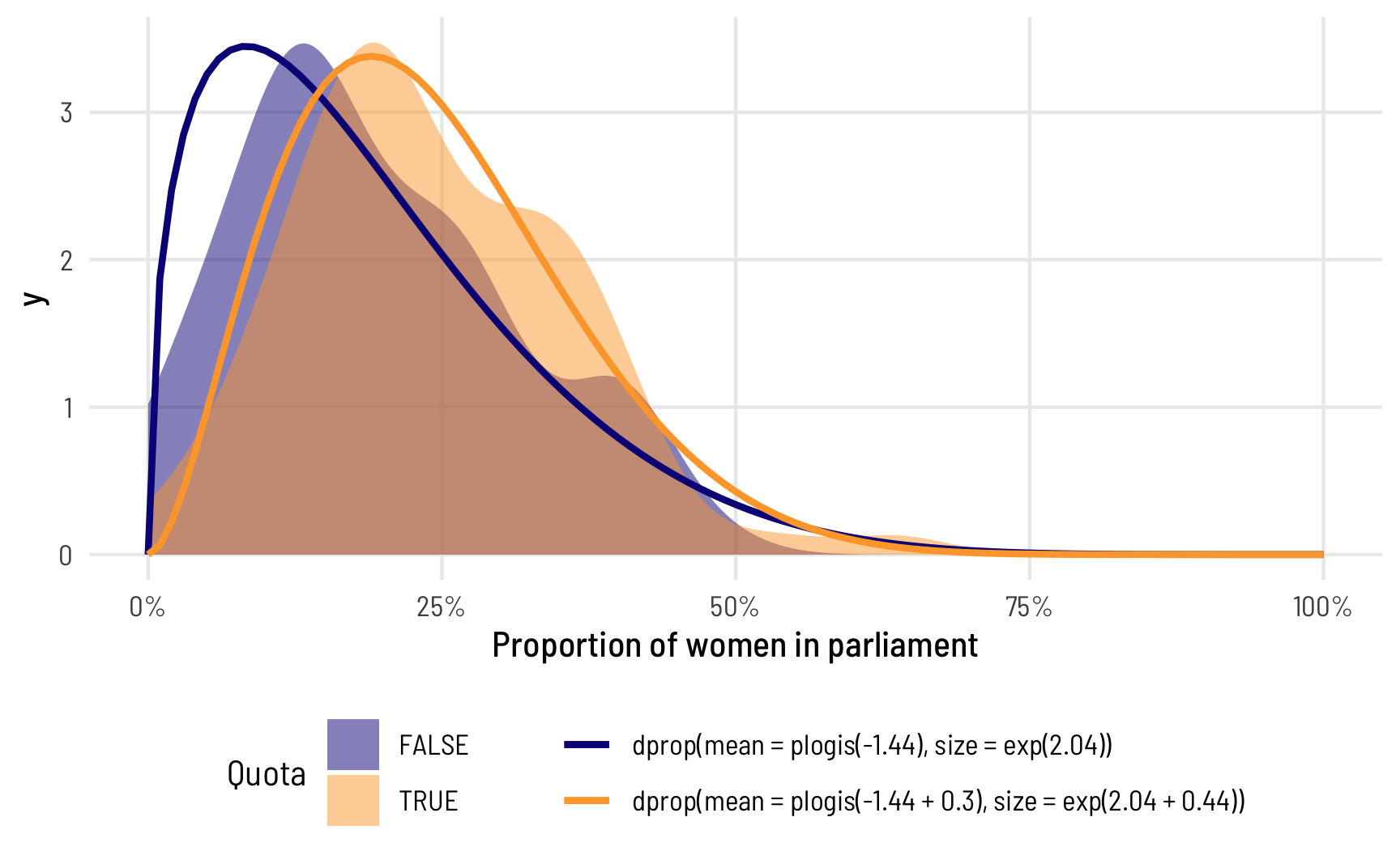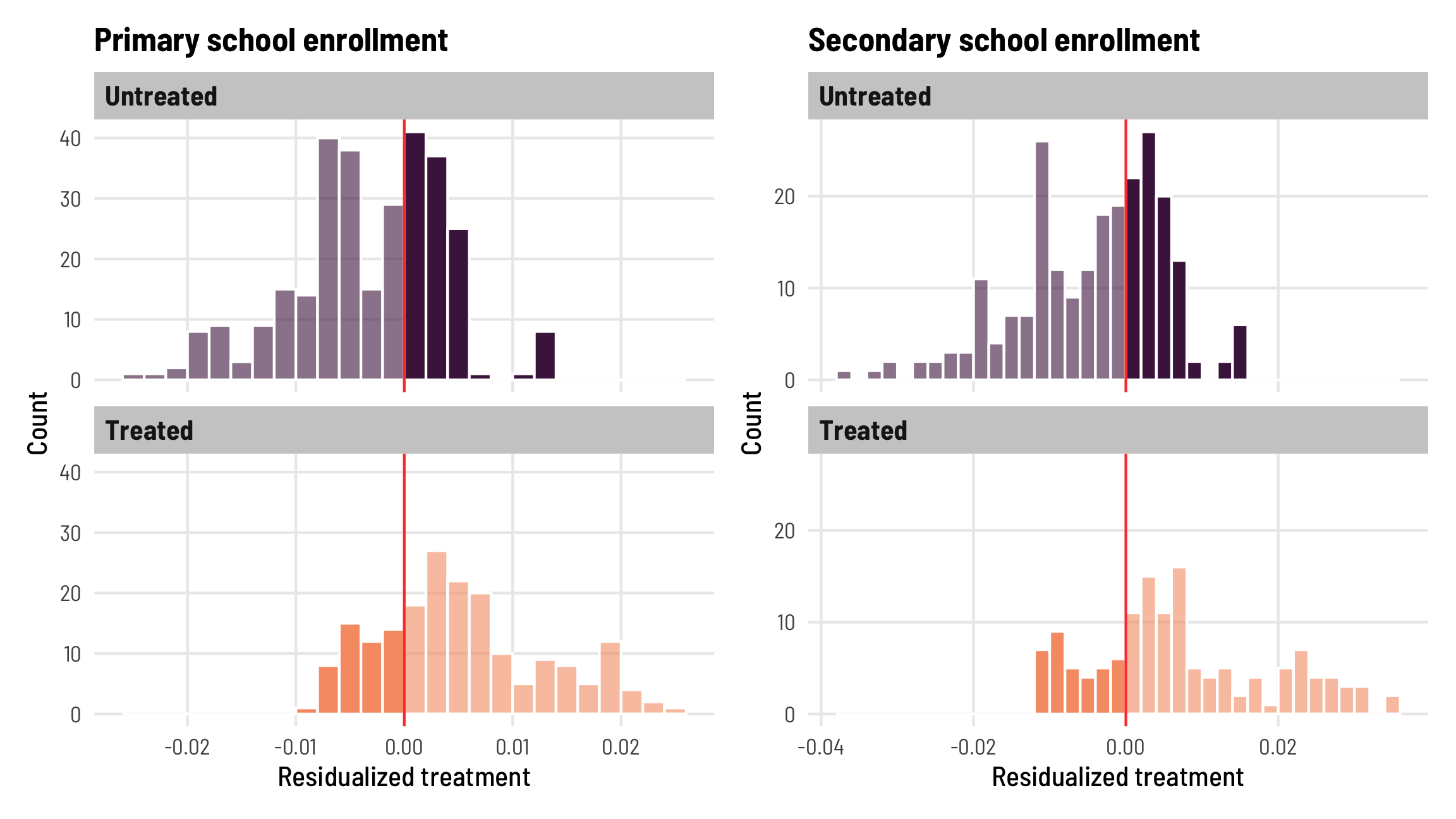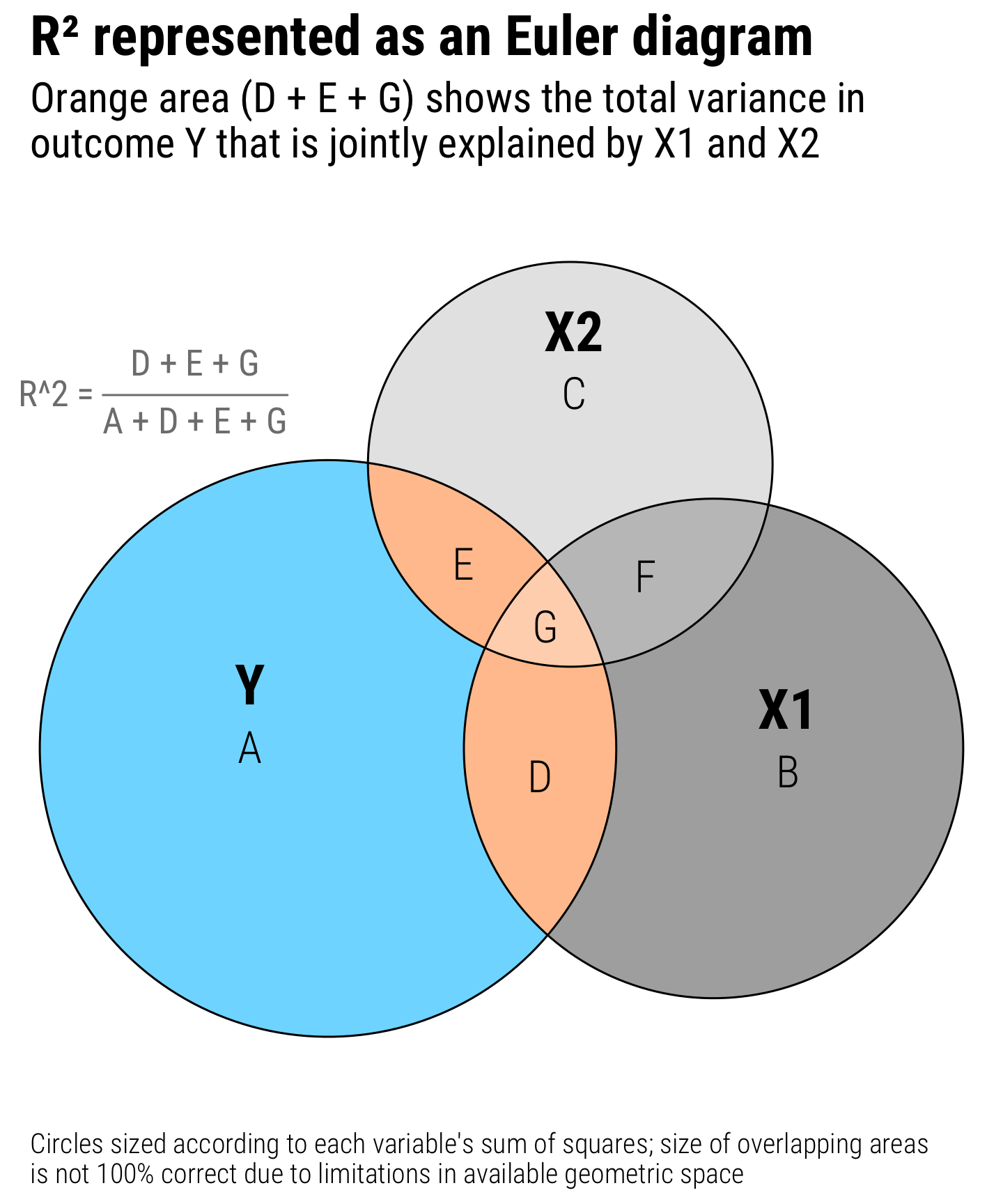
In the data I work with, it’s really common to come across data that’s measured as proportions: the percent of women in the public sector workforce, the amount of foreign aid a country receives as a percent of its GDP, the percent of religious organizations in a state’s nonprofit sector, and so on. When working with this kind of data as an outcome variable (or dependent variable) in a model, analysis gets tricky if you use standard models like

